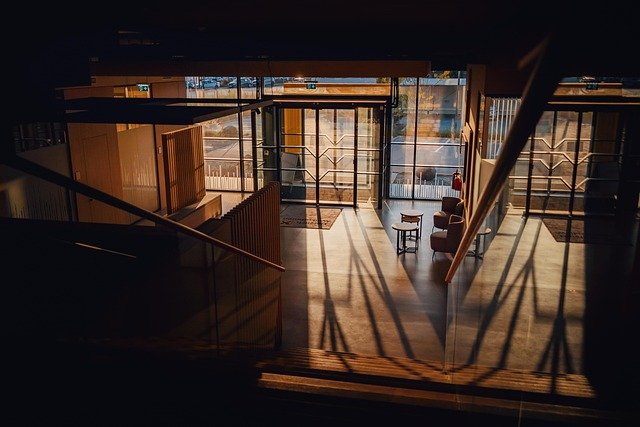Sculptural Staircases: Elevating Home Design to New Heights
Imagine walking into a home where the staircase isn't just a functional element, but a breathtaking work of art. This isn't a scene from a futuristic movie, but a growing trend in modern interior design. Sculptural staircases are revolutionizing how we think about vertical circulation in our homes, transforming these often-overlooked spaces into stunning focal points that captivate and inspire.

As modernist architecture emerged in the 20th century, stairs began to take on more minimalist forms. Architects like Le Corbusier and Mies van der Rohe experimented with floating treads and streamlined designs. This set the stage for the contemporary sculptural staircase movement, where form and function intertwine to create stunning visual statements.
The Rise of Sculptural Staircases
Today’s sculptural staircases are pushing the boundaries of design and engineering. Architects and designers are treating stairs as three-dimensional sculptures, using innovative materials and cutting-edge technology to create gravity-defying structures. These staircases are no longer just about getting from one floor to another; they’re about creating an experience, a moment of pause in our busy lives.
Materials like glass, steel, and engineered wood are being used in unprecedented ways. Cantilevered steps seem to float in mid-air, while spiraling forms create a sense of movement and fluidity. Some designs incorporate LED lighting, turning the staircase into a dynamic light installation that changes throughout the day.
Integrating Art and Architecture
One of the most exciting aspects of sculptural staircases is how they blur the line between art and architecture. Many homeowners are commissioning bespoke staircase designs from artists and sculptors, turning their homes into personal galleries. These custom pieces often reflect the homeowner’s personality or the architectural style of the house.
For example, a nature-loving client might opt for a biomorphic staircase that mimics the organic forms found in trees or seashells. In contrast, a minimalist might choose a sleek, geometric design that plays with light and shadow. The possibilities are limitless, limited only by imagination and engineering constraints.
Functionality Meets Form
While the aesthetic appeal of sculptural staircases is undeniable, it’s crucial to remember that they must still function as safe and practical means of vertical circulation. Designers are rising to this challenge by incorporating innovative safety features that don’t detract from the overall design.
Glass balustrades provide necessary protection while maintaining visual lightness. Non-slip surfaces are seamlessly integrated into treads, ensuring safety without compromising aesthetics. Some designs even incorporate storage solutions or seating areas, maximizing the functionality of the space.
The Impact on Home Value and Perception
Investing in a sculptural staircase can significantly impact a home’s value and marketability. These unique features often become the talking point of the property, creating a lasting impression on visitors and potential buyers. Real estate agents report that homes with striking architectural elements like sculptural staircases tend to sell faster and at higher prices than comparable properties without such features.
Moreover, a well-designed staircase can transform the entire feel of a home. It can make small spaces feel larger, bring light into dark corners, and create a sense of flow between different levels of the house. In open-plan layouts, a sculptural staircase can serve as a natural room divider while maintaining visual connectivity.
Challenges and Considerations
While the allure of sculptural staircases is strong, there are challenges to consider. The complexity of these designs often requires specialized engineering and construction techniques, which can drive up costs. Maintenance can also be more involved, especially for designs incorporating unusual materials or intricate details.
Homeowners must also consider the long-term practicality of their chosen design. Will it accommodate changing mobility needs? How will it fit with future renovations or changes in interior design? These are important questions to address during the planning stage.
The Future of Stair Design
As technology continues to advance, we can expect even more innovative staircase designs in the future. 3D printing is already being used to create complex forms that were previously impossible to manufacture. Smart materials that respond to touch or temperature could lead to staircases that adapt to users’ needs in real-time.
Virtual and augmented reality tools are also changing how staircases are designed and visualized. Homeowners can now see and experience different staircase designs in their space before committing to construction, leading to more personalized and satisfying results.
In conclusion, sculptural staircases represent a exciting convergence of art, architecture, and engineering. They challenge our perceptions of what a staircase can be, transforming a once-utilitarian element into a stunning centerpiece of home design. As this trend continues to evolve, we can look forward to ever more creative and awe-inspiring ways to move between levels in our homes.





